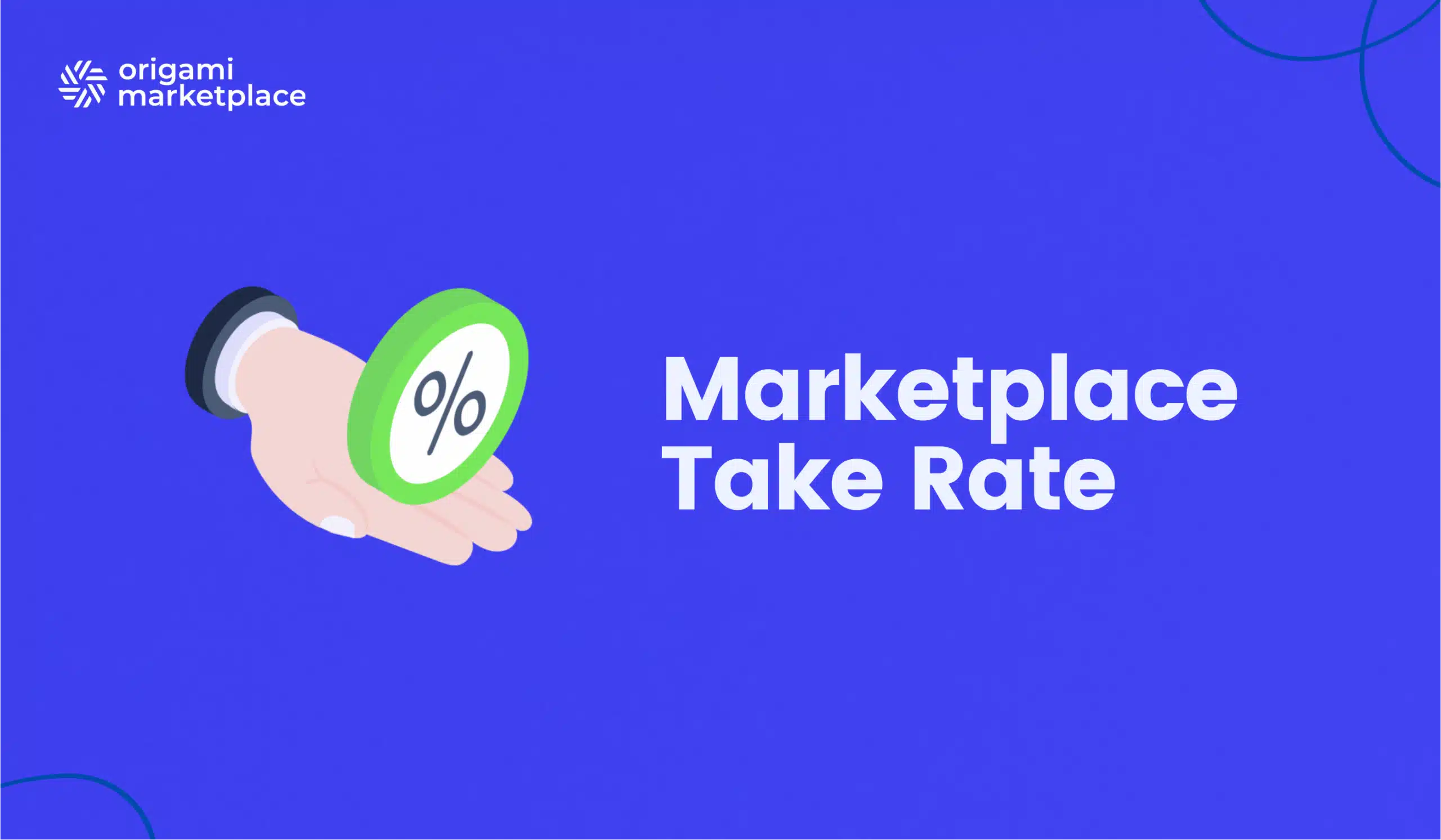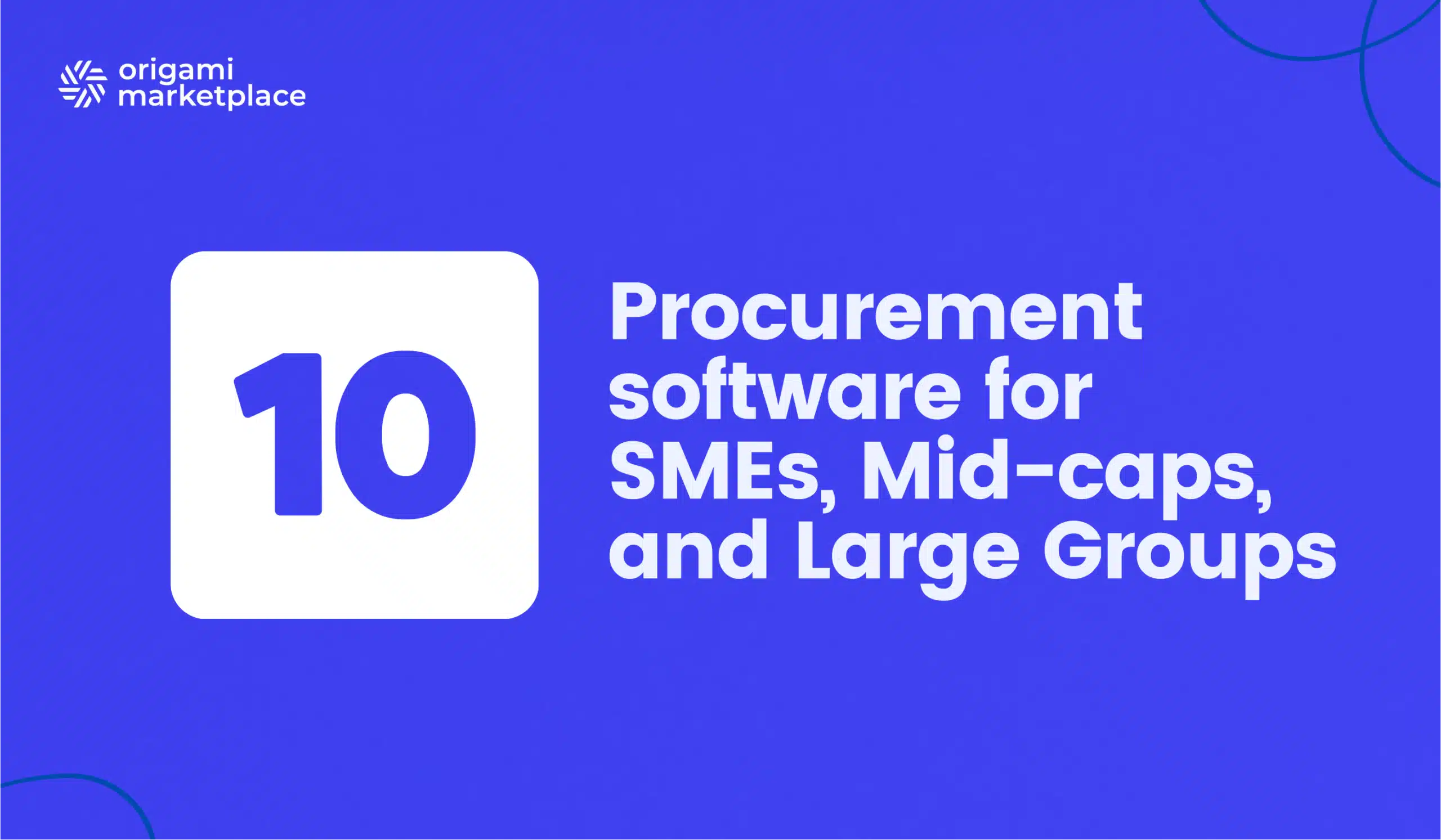Marketplace Take Rate: A guide for Marketplace Operators
- Arnaud
- 12 minutes reading

In today’s dynamic digital economy, online marketplaces have revolutionized the way we buy and sell goods and services. Central to the success and profitability of these platforms is understanding and effectively managing the take rate (the commission) a marketplace charges for facilitating transactions between buyers and sellers. Grasping these financial mechanisms is crucial for any operator aiming to optimize their platform.
This comprehensive guide delves deep into the concept of the take rate, offering insights on how to determine, calculate, and maximize it to propel your business to new heights.
- What is the Take Rate?
- Take Rate definition
- Importance of Take Rate in Marketplaces
- Example of Marketplace Take Rates
- What is the average Marketplace Take Rate?
- What factors influence Marketplace Take Rate?
- How to calculate Take Rate
- How to find the right Take Rate for your Marketplace
- Pick a Rate That works for your business
- What’s a good Take Rate?
- Strategies to improve Take Rate
👋 No time to read the whole article? Find the summary here.
1. What is the Take Rate?
2. Take Rate definition
The take rate is a critical financial metric in the world of marketplace businesses. It represents the percentage of each transaction that a marketplace retains as revenue for facilitating exchanges between buyers and sellers. Formally, it is calculated as:
Take Rate (%) = (Marketplace Revenue / Total Gross Merchandise Value) × 100
- Marketplace Revenue: The total income generated from commissions and fees.
- Gross Merchandise Value (GMV): The total value of all transactions processed through the marketplace over a specific period.
Also known as “rake,” “commission,” “fee,” or “transaction fee,” the take rate varies widely, ranging from 0% to over 50% depending on factors like industry, type of sale, and geography. It reflects the marketplace’s ability to capture value from the transactions it facilitates and directly impacts its profitability and competitiveness.
Setting a balanced take rate is essential for marketplace administrators. It allows them to generate revenue while ensuring they provide more value to both buyers and sellers than the costs they charge.
Your take rate directly influences various aspects of your business and growth strategy, including scalability, user acquisition, competitive positioning, and overall profitability.
3. Importance of Take Rate in Marketplaces
Understanding and optimizing the take rate is crucial for the success of any marketplace platform. It is the primary source of revenue, directly influencing the profitability and sustainability of the marketplace. A well-calibrated take rate enhances competitive positioning by attracting more sellers and buyers; when the fees are perceived as fair and value-driven, more participants are likely to engage with the platform.
Additionally, the take rate reflects the marketplace’s value proposition by signaling the services it provides, such as extensive customer reach, robust marketing support, and secure transaction processing. Therefore, a higher take rate when justified by superior services and added value can signify greater revenue generation and serves as a vital indicator of a marketplace’s overall health and operational efficiency.
Download our free B2B marketplace specifications template.
Here you will find all the essential features to succeed in your B2B multi-vendor marketplace. This model provides a simple backlog to guide you through each step of your project.

4. Example of Marketplace Take Rates
| Marketplace | Take Rate |
|---|---|
| Amazon | ≈ 12% |
| Airbnb | ≈ 11% |
| Exepdia | ≈ 11,9% |
| TicketMaster | ≈ 26% |
| App Store | ≈ 30% |
| Rakuten | ≈ 10% |
| Vinted | ≈ 5% |
5. What is the average Marketplace Take Rate?
The average take rate varies across industries:
- Physical goods marketplaces: Typically range from 5% to 20%.
- Service-based platforms: Can be higher, often between 10% and 30%.
- Luxury or niche markets: May command take rates upwards of 25% due to specialized services.
Understanding the average in your specific market provides a baseline for setting your own take rate.
"Hesitating between SaaS and On-Premise? Think about your priorities! If speed of implementation and reduction of initial costs are crucial, a SaaS solution is ideal. Need total customization and control over ownership? The On-Premise option could be your best ally. Don't forget to analyze your internal resources and long-term capabilities before making a decision!"

Alexandre Duquenoy
→ Talk to our solutions expert
6. What factors influence Marketplace Take Rate?
The take rate of a marketplace charged on transactions is influenced by several key factors:
Industry norms and competition
- Competitive benchmarking: Analyzing what competitors charge helps set a take rate that is both attractive to sellers and sustainable for the marketplace.
- Market saturation: In highly competitive markets, offering a lower take rate can attract more sellers and differentiate the platform from others.
Value provided to users
- Additional services: Offering value-added services like marketing tools, detailed analytics, or dedicated customer support can justify a higher take rate by enhancing the seller experience.
Trust and Safety - Measures: Investing in robust security features and fraud prevention increases user confidence, allowing the marketplace to charge higher commissions.
Cost structure and scalability
- Operational expenses: The need to cover costs associated with technology infrastructure, staffing, and maintenance influences the minimum take rate required for profitability.
Investment in - Scalability: Funding for scalable solutions and future growth may necessitate a higher take rate to ensure long-term success.
Seller profit margins and sensitivity
- Product pricing and margins: Sellers with high-margin products are generally more able to absorb higher take rates without significantly impacting their profits.
- Sensitivity to fees: Understanding how sensitive sellers are to commission fees is crucial; setting rates too high may deter them from using the platform.
By carefully considering these factors, a marketplace can set a take rate that balances competitiveness, value provision, cost coverage, and seller satisfaction.
7. How to calculate Take Rate?
Calculating the take rate is essential for understanding how much revenue your marketplace earns from transactions. The process is straightforward and involves the following steps:
Determine total marketplace revenue – Sum of commission fees: Add up all the commission fees collected over a specific period. This total represents the marketplace’s revenue from facilitating transactions.
Calculate total Gross Merchandise Value (GMV) – Sum of all transactions: Calculate the total value of all goods or services sold through the marketplace during the same period. This figure represents the GMV.
Apply the Take Rate Formula:

Example calculation : Imagine your marketplace has the following figures for a given period:
- Total marketplace revenue: $200,000
- Total GMV: $4,000,000

This means the marketplace retains 5% of the total transaction value as revenue on average.
Why is the Take Rate important? Understanding and calculating the take rate helps in several ways:
- Revenue analysis: It shows how much income the marketplace generates relative to the total sales.
- Pricing strategy: Helps in setting competitive commission rates while ensuring profitability.
- Benchmarking: Allows comparison with industry standards to assess market position.
- Decision making: Informs strategies for scaling, investing in services, or adjusting fee structures.
8. How to find the right Take Rate for your marketplace?
Determining the optimal take rate involves balancing profitability with competitiveness. To achieve this, begin by assessing market conditions. Conduct a competitive analysis to research your competitors’ take rates, and understand demand elasticity to see how changes in your take rate might affect seller participation.
Next, evaluate your value proposition by identifying services that differentiate your marketplace and by highlighting features that provide tangible benefits to sellers.
Perform a thorough cost analysis by calculating your break-even point to determine the minimum take rate needed to cover costs. Then, determine the rate that achieves your desired profitability by examining your profit margins.
Testing and iteration are crucial steps. Implement different take rates with select sellers through pilot programs, and use feedback loops to gather insights from users, refining your strategy accordingly.
9. Pick a Take Rate that works for your Business
Choosing the right take rate is a strategic decision that should align with your business goals. It’s essential to ensure that the rate you set supports your long-term objectives, whether that’s maximizing profitability, expanding market share, or enhancing the user experience.
Flexibility is key in today’s dynamic market environment. Be open to adjusting your take rate as market conditions evolve, allowing you to remain competitive and responsive to the needs of both sellers and buyers.
Transparency is also crucial in building and maintaining trust with your sellers. Clearly communicating all fees and commission structures helps to avoid misunderstandings and fosters a positive relationship between your marketplace and its users.
Remember, the optimal take rate is one that balances the needs of your marketplace with those of the sellers and buyers. By carefully considering your business goals, remaining flexible, and prioritizing transparency, you can select a take rate that works effectively for your business.
Download our free B2B marketplace specifications template.
Here you will find all the essential features to succeed in your B2B multi-vendor marketplace. This model provides a simple backlog to guide you through each step of your project.

10. What's a good Take Rate?
Determining what constitutes a “good” take rate is crucial for the success of your marketplace. A good take rate should be competitive, meaning it aligns with or is better than industry standards. Setting a rate that is too high compared to your competitors may discourage sellers from joining your platform, while a rate that is too low might not cover your operational costs.
It should also be profitable, covering all expenses and providing a reasonable profit margin. This ensures that your marketplace remains sustainable and can continue to grow and improve over time.
Additionally, the take rate must be justifiable, reflecting the value you provide to your users. If your platform offers unique features, exceptional service, or other value-added benefits, a higher take rate can be more easily justified to both sellers and buyers.
Determining the optimal take rate requires thorough market research and financial analysis. By understanding industry benchmarks, assessing your cost structure, and evaluating the unique value your marketplace offers, you can set a take rate that balances competitiveness with profitability and user satisfaction.
11. Strategies to improve Take Rate
Enhancing your take rate involves adding value and optimizing operations:
1. Enhance seller services
- Premium Features: Offer advanced tools for a higher fee.
- Education and Support: Provide resources to help sellers succeed.
2. Optimize buyer experience
- User interface improvements: A seamless experience can attract more buyers.
- Personalization: Tailored recommendations increase transaction volumes.
3. Diversify revenue streams
- Advertising: Offer promotional spots to sellers.
- Subscription models: Introduce membership tiers with exclusive benefits.
4. Improve operational efficiency
- Automation: Streamline processes to reduce costs.
- Data analytics: Use insights to make informed decisions.
The take rate of a marketplace is more than a simple commission. It’s a pivotal factor shaping the success of your platform. By carefully analyzing the variables that influence it and mastering the art of calculation and optimization, you can establish a take rate that strikes the perfect balance between profitability and competitiveness. A well-calibrated take rate not only reflects the true value your marketplace offers but also nurtures a thriving ecosystem for both buyers and sellers.
If you’re seeking to fine-tune your take rate strategy or need expert guidance, the team at Origami Marketplace is here to assist. We are committed to empowering marketplace operators to achieve long-term growth and sustainable success.
The Take Rate is the percentage a marketplace retains from each transaction as revenue. It’s essential for profitability and competitiveness. Calculated as: Take Rate (%) = (Marketplace Revenue / GMV) × 100.
Key points:
- Importance: Primary revenue source; impacts seller margins and platform growth.
- Examples: Amazon ≃ 12%, Airbnb ≃ 11%, App Store ≃ 30%, Vinted ≃ 5%.
- Influencing Factors: Industry norms, added value (services, security), costs, and seller sensitivity.
- Optimization: Balance profitability with competitiveness through testing, added value, and efficiency.
- Improvement Strategies: Premium seller tools, better UX, revenue diversification, and automation.
Discover how Origami Marketplace’s API and partner network can transform your business, regardless of its size, with its innovative marketplace-based solution.


